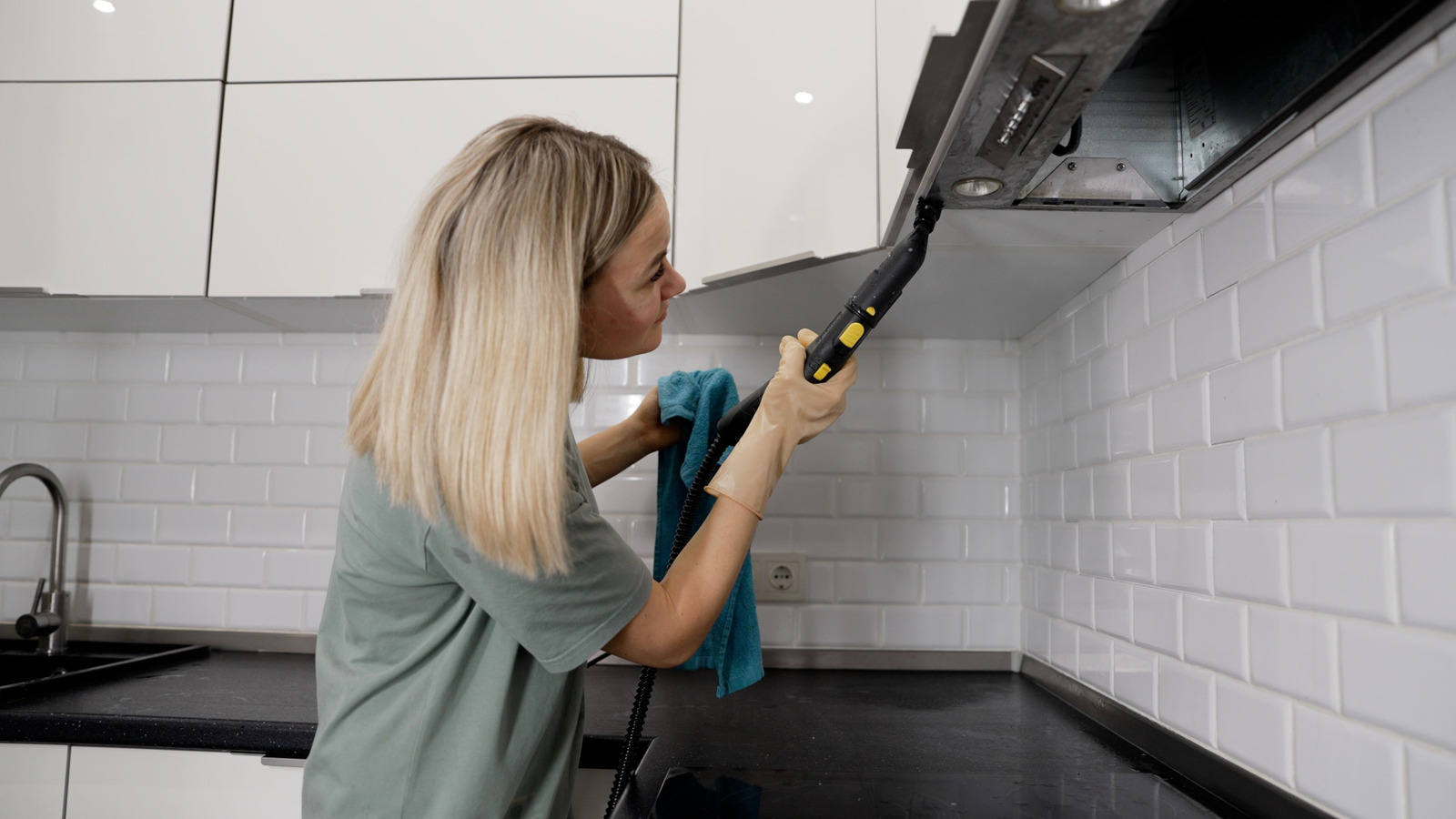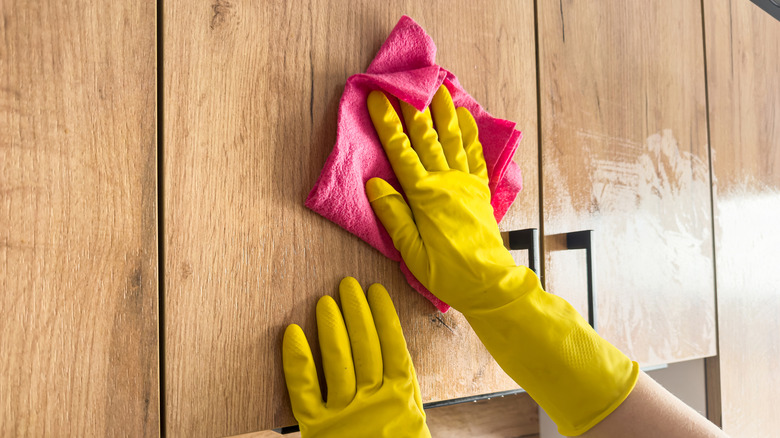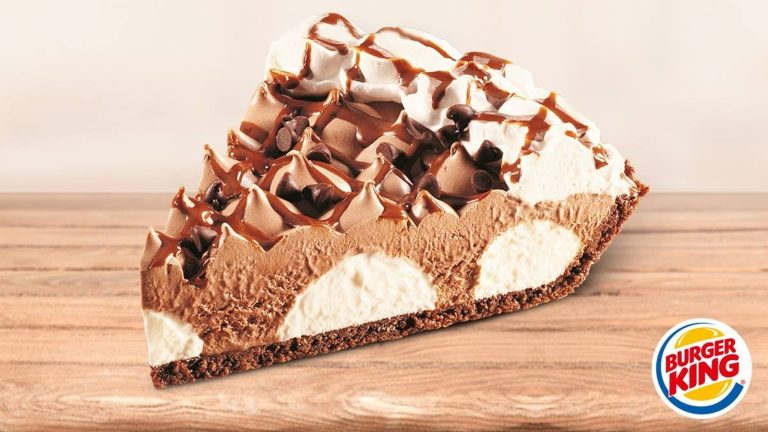We may receive a commission on purchases made from links.
Steam cleaning is a super effective way to get rid of grease, grime, and bacteria, all without harsh chemicals. But that powerful hot vapor isn’t safe for every surface. Before attempting to steam clean your kitchen cabinets, you should first know what material they’re made from. If you’re not sure, look at the edges, check your original purchase details, or do a small steam-cleaning test on an inside corner. Because at the end of the day, steam is water, and water can do lots of damage in the kitchen if it gets into places it shouldn’t.
Cabinets made of sealed, solid hardwood usually hold up fine if you’re careful and don’t overdo it. Use a handheld steam cleaner with a small attachment, such as the Insteam multi-surface steamer, which comes with heat-resistant gloves for safe handling. Start with low to medium pressure and keep the steam head moving. Do not go in full blast like you’re pressure washing a sidewalk. After all, you want to loosen dirt, not soak the surface. Basic microfiber cloths like Homexcel’s 12-pack of cleaning towels are a great choice to wipe away moisture immediately after steaming. The quicker you dry, the safer your cabinet finish stays, as this prevents water from seeping into any cracks.
Cleaning cabinets that are not steam friendly
If steam isn’t safe for your cabinet material, there’s no need to worry, as you still have a couple of options to keep your cabinets clean. MDF (medium-density fiberboard) and some painted finishes can bubble or peel when exposed to high heat and moisture , and laminate or unsealed cabinets might get damaged. So the safest method to clean these surfaces is with a gentle mix of warm water and mild dish soap (Dawn soap is a solid choice for getting rid of stains.) Dip a soft cloth in, wring it out, and wipe down the surface. No dripping, no soaking. Just the damp, clean cloth will suffice.
You can also modify your cleaning solution with vinegar, which is a kitchen cleaning staple with many uses. One of them is removing stubborn grease. Simply add a splash of white vinegar to your soapy water and the natural cleaner should help break down grime without damaging finishes. Remember to always follow up with a dry towel to prevent moisture damage. You should also avoid abrasive scrubbers and strong chemical sprays. Even all-purpose cleaners can be too harsh over time. And if you must use cleaning sprays, apply them on a towel first.
The bottom line is that while steam cleaning can be amazing and give your kitchen cabinets a lovely shine, it’s not particularly necessary. It’s not one-size-fits-all either. So when in doubt, go with the classic soap-and-water combo. Your cabinets will thank you later.






